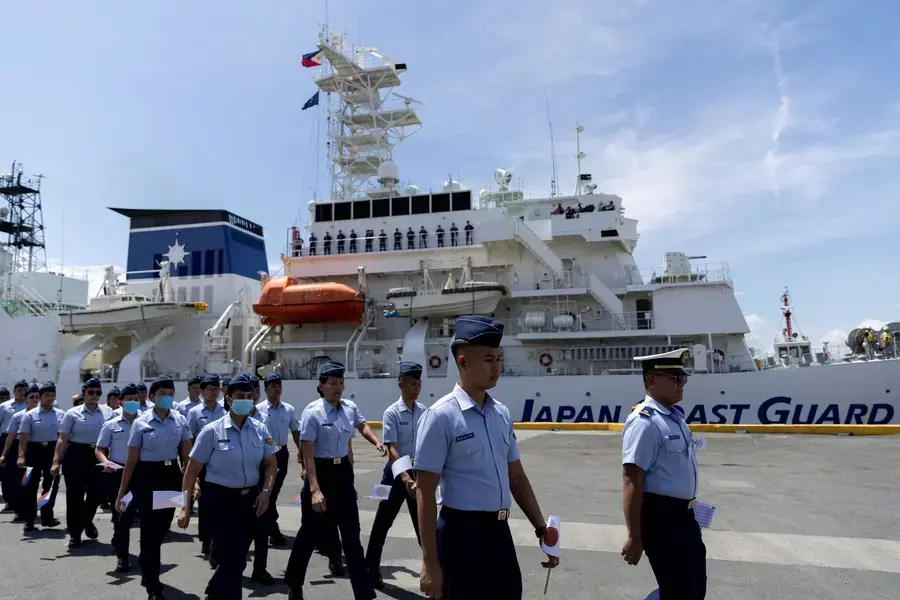The U.S.-Japan-Philippines Trilateral Was a Success, but Other Southeast Asian States Are Unlikely to Follow

The recently concluded U.S.-Japan-Philippines trilateral White House joint meeting, the first of its kind, was a success for its purposes. Under President Ferdinand Marcos Jr., the Philippines has dramatically changed course from its previous administration and has clearly aligned with the United States. It committed to strengthening ties with both Tokyo and Washington. President Biden, building on a point previously made by Mike Pompeo when he was Secretary of State, reaffirmed the United States’ “ironclad” commitment to defending its treaty ally, the Philippines—a declaration signaling U.S. readiness to defend Manila in a potential South China Sea conflict. The meeting also drew Japan further into regional security, particularly in the South China Sea, as Tokyo has become increasingly assertive in enhancing its security relationships with Southeast Asian states and other partners in the Indo-Pacific.
As the New York Times reported, this meeting appeared to be a direct challenge to China, indicating that the White House was coordinating a region-wide effort in response to Beijing’s growing assertiveness. The Times noted, “President Biden used a first-ever joint meeting with the leaders of Japan and the Philippines on Thursday to expand a web of security and economic alliances in the Indo-Pacific that American officials believe will serve as a shield against Chinese aggression.”
More on:
Indeed, as Time magazine has noted, the Biden administration has sought to strengthen a network of partnerships across the Indo-Pacific with China in mind, encouraging its allies and partners in the region to fortify bilateral and trilateral ties. Time reported, “In just the last three years, the United States has solidified individual ties with Japan, Vietnam, the Philippines, and Singapore, among others, while also fostering new collective relationships between nations such as Japan and South Korea, Australia, and the UK, and now Japan and the Philippines.”
However, the belief held by many U.S. officials—and some U.S. partners—that other Southeast Asian countries will take as definitive a stance as Manila in aligning with Washington (and partners like Tokyo) is almost certainly not going to happen. According to the ISEAS-Yusof Ishak Institute State of Southeast Asia 2024 survey, while countries in Southeast Asia are concerned about China’s long-term security intentions, other than the Philippines, all are likely to continue their strategy of hedging between the United States and China, their most dominant trade partner and often a major investor—especially during times of growing political uncertainty in the United States. Countries like Cambodia, Laos, and Myanmar (under the junta) have already aligned more clearly with China.
Southeast Asian states, even those most concerned about China’s activities, will not take the more extreme steps favored by Marcos Jr. or risk alienating Beijing. Indonesia’s new president, Prabowo Subianto, an ardent nationalist who has sometimes demonized China domestically and enjoyed a positive relationship with the United States as the former defense minister, made his first visit as president-elect to Beijing, continuing Jakarta’s strategy of somewhat strengthening security links with the United States while seeking Chinese investment, especially in infrastructure.
Similarly, Vietnam, probably the country in the region other than the Philippines (and possibly Singapore), has the most significant immediate concerns about Beijing’s actions in the South China Sea and has recently upgraded its partnership with the United States. Yet, it quickly followed this by engaging in clear hedging—hosting a visit from Xi Jinping and taking multiple steps to deepen and strengthen the China-Vietnam relationship. Other states like Malaysia and Thailand, which have always been the major countries in the region most favorable to China, are even warier about moving beyond hedging and emulating Marcos Jr. Although this hedging strategy may eventually have to end as Beijing continues to increase its regional naval activity and as the possibility of regional conflict looms, for now, while the trilateral meeting was a strong signal by Manila, Tokyo, and Washington, other Southeast Asian states are not expected to follow suit.
More on:
 Online Store
Online Store